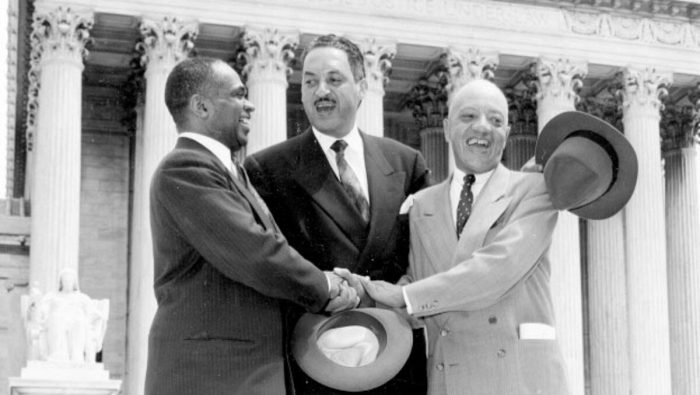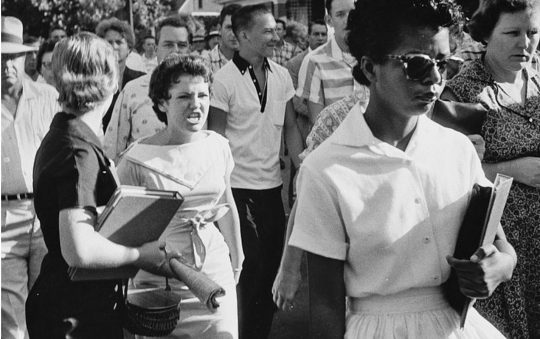
May 17, 1954, the U.S. Supreme Court held that segregated education was “inherently unequal” and would only create further problems. This decision was followed by more rulings in favor of ending segregation, with great hope for a future of equal schooling for children of all races. However, today, many believe there is no reason to celebrate such a historic moment in the history of America’s civil rights.
As we reached the 65th anniversary of the Brown v. Board of Education trial of 1954, many researchers begin to ask how far have we come in the desegregation of schools. The answer is a clear contradiction of the demographics of the entire nation.
For 23 years, Professor Gary Orfield has been working with the UCLA Civil Rights Project since its creation at Harvard University. It was moved to UCLA in 2007 to continue research and monitor the promises made after the Brown v. Board trial came to an end.
Research now shows that although there was progress 50 years ago, we are now going backward due to changed rules made by the Supreme Court. With California being the second most segregated state for Black students, researchers are looking to officials and politicians to step up and do something surrounding laws that are working to maintain the divided state.

“It’s very discouraging, but we never give up,” Professor Orfield says regarding California officials, adding they do nothing to aid in desegregating schools.
Harming our Common Future: America’s Segregated Schools 65 Years After Brown is a product of the UCLA Civil Rights Project, partnered with the Center of Education and Civil Rights at Pennsylvania State University and produced in collaboration with researchers at Loyola Marymount University, North Carolina State University and Pennsylvania State. Authors included already mentioned Professor Gary Orfield, Erica Frankenberg, Jongyeon (Joy) Ee, and Jennifer B. Ayscue.
The report Harming our Common Future: America’s Segregated Schools 65 Years After Brown found despite increasing diversity segregation of Black students has expanded, noting the majority of Latino students are also heavily segregated across the nation. Tying in that segregation is not only due to race, but income levels as well. Finding that not only are Black students are double segregated, having minority students in minority schools.
Major findings are within the topics of enrollment shifts, the expansion, and intensification of segregation in schools, and changes within the suburbs. Each of which illuminates America’s issue with poverty, race, class.

“It is time to make people start thinking about these questions and to put our politicians on line,” Professor Orfield says of questions to answer why segregation is growing. He continues saying, “there’s places where it is almost impossible; residential segregation is so extreme and vast, but there are lots of places where something can be done.”
The question is also how to combat segregation not only by law amendments and political power but on a community level as well.
Professor Orfield believes knowledge is the only way. “Community groups need to understand how they are being hurt by the double and triple segregation, how unhealthy it [segregation] is and how it disadvantages kids in terms of getting into college and getting ready for jobs.”
He also alluded to the possibility of cohesive relationships between various minority groups on a communal base. A topic which could bring groups together to aid in desegregating schools as well.
“People really like to discover each other’s cultures and share ideas, and find out that everyone basically has the same dream,” he says of the culture, believing it doesn’t happen by accident.
The report includes researchers also believing proper training of faculty and staff in response to the changes in demographic change could aid in curving the rate of segregation. Proper understanding could better help teachers and leaders assist students based on real needs and not that of systematic habit. A habit that needs to be dismantled.
Although the research is disheartening, the UCLA Civil Rights Project researchers seize every opportunity to inform others of the trends with hopes to implement change in the broken city. Professor Orfield and his team are determined to press forward, opening the eyes and minds of California and other cities across the nation.
Brown v. Board of Education opened the door 65 years ago creating the conversation around segregation in schools. However, it is now time for California and many other places to reopen the discussion to make a change to save the future leaders of America.
The report Harming our Common Future: America’s Segregated Schools 65 Years After Brown can be found online at the UCLA Civil Rights Project website.







